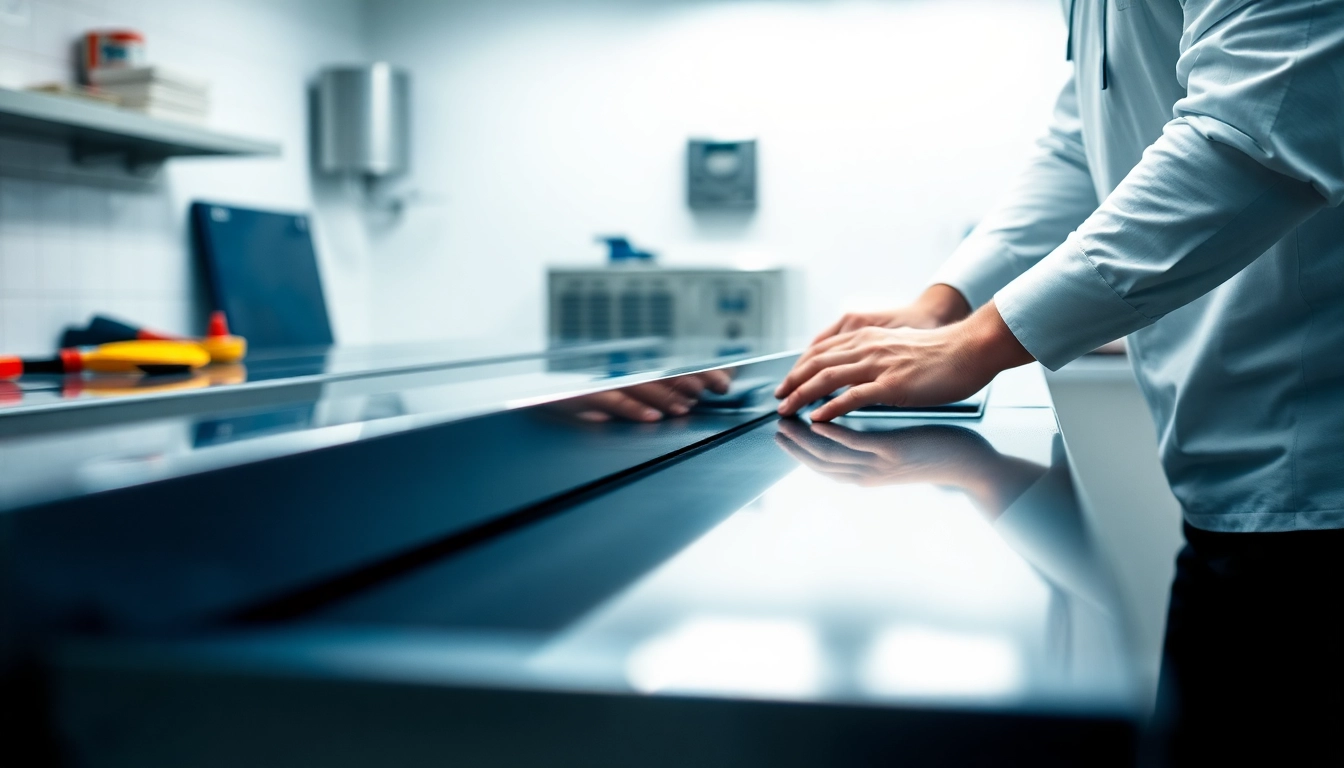Understanding Prep Table Repair Needs
Prep tables are essential components in commercial kitchens, providing a convenient workspace for food preparation while keeping ingredients fresh and accessible. However, like any equipment, they are prone to wear and tear, leading to maintenance and repair issues. Being aware of the prep table repair requirements is crucial for kitchen efficiency and compliance with health regulations.
Common Issues with Prep Tables
Several problems may arise with prep tables, and identifying these issues early can prevent costly repairs or equipment replacement. Here’s a look at some of the most common problems:
- Temperature Control Problems: If a prep table is unable to maintain the required cool temperatures, food safety may be compromised, leading to spoilage and health risks.
- Door Seal Failures: Damaged seals can lead to inefficient cooling, increased energy costs, and potential food safety issues.
- Thermostat Malfunctions: A malfunctioning thermostat may cause irregular heating or cooling cycles, affecting ingredient preservation.
- Physical Damage: Scratches, dents, and structural issues may develop over time, potentially impacting functionality and sanitation.
- Electrical Failures: Issues with wiring or components can lead to complete breakdowns of the unit.
Signs Your Prep Table Requires Repair
Recognizing the signs of a malfunctioning prep table can save time and money in the long run. Common indicators that repairs are needed include:
- Inconsistent temperature readings, often fluctuating higher than allowable food safety limits.
- Condensation or water pooling in or around the unit, indicating possible door seal or cooling system issues.
- Unusual sounds, such as clicking or grinding, which may signify mechanical issues.
- Excessive energy bills, suggesting that the unit is running inefficiently.
- Visible damage to surfaces or components, signaling a need for immediate repair.
Preventive Maintenance Strategies
Preventive maintenance is crucial to prolonging the lifespan of prep tables and ensuring they operate efficiently. Here are a few strategies:
- Regular Cleaning: Keeping surfaces clean and free from spills and debris helps to avoid bacteria growth and maintains the appearance of the table.
- Routine Inspections: Conduct regular checks of seals, temperature gauges, and electrical components. Look for wear and tear or other signs of damage.
- Scheduled Maintenance: Following a maintenance schedule that includes professional inspections and tune-ups can prevent breakdowns.
- Staff Training: Ensure that kitchen staff is trained on proper usage and the importance of maintaining the equipment.
Step-by-Step Repair Process for Common Problems
Repairing Thermostat Problems
Thermostat issues can be a major pain point in maintaining appropriate temperatures within prep tables. Here’s how to diagnose and repair them:
First, check the thermostat setting to make sure it’s correctly set to the desired temperature. If the setting seems correct, use a reliable thermometer to compare the actual temperature in the unit.
If you find a discrepancy, consider the following steps:
- Check for power to the thermostat. If it appears to be dead, the thermostat may need to be replaced.
- Inspect the wiring for any frays or loose connections that might prevent proper function.
- Replace the thermostat if it fails to regulate temperature correctly, following the manufacturer’s instructions to ensure a proper fit.
Fixing Door Seal Leaks
Door seal integrity is vital for maintaining temperature. Signs of a leak can often be identified by increased condensation or frost build-up inside the unit. To repair door seal leaks:
- Inspect the door gasket for signs of wear, such as cracks or tears.
- Clean the gasket with warm soapy water. Sometimes, dirt can affect the seal.
- If the gasket is damaged beyond repair, replace it. Ensure the new gasket adheres securely to prevent further leaks.
Addressing Temperature Inconsistencies
Temperature inconsistencies often result from a variety of issues, including faulty thermostats, poor insulation, or door seal failures. Addressing these problems involves several steps:
- Utilize an accurate thermometer to monitor the internal temperature over time.
- Evaluate the insulation quality. If damaged, may need replacing.
- Ensure that food placement within the unit allows for efficient airflow, avoiding blockages.
Tools and Parts Required for Effective Repair
Essential Tools for Prep Table Repair
Having the right tools on hand is essential for successful prep table repair. Important tools include:
- Wrenches and screwdrivers for disassembling parts.
- Thermometers to monitor temperature changes.
- Cleaning supplies, including brushes and cloths.
- Electrical tools for diagnosing electrical issues.
- Replacement parts as needed for specific repairs.
Finding Quality Replacement Parts
sourcing high-quality replacement parts is vital for ensuring long-lasting repairs. Consider the following sources:
- Manufacturer’s Websites: Many manufacturers sell credible replacement parts that match the original specifications.
- Reputable Suppliers: Look for suppliers who specialize in commercial kitchen equipment to find quality options.
- Second-Hand Markets: Sometimes, you can find used but functional parts for significant savings, particularly for older model tables.
Recommended Repair Kits for DIY Enthusiasts
For DIY enthusiasts, several repair kits are available that cater specifically to prep table repairs:
- Thermostat Repair Kits: Often include replacement thermostats, tools for installation, and instructions.
- Seal Kits: Typically come with gaskets and adhesive supplies to ensure the right fit.
- General Maintenance Kits: These kits provide a mix of cleaning supplies and tools designed to keep your prep table in prime condition.
Professional vs. DIY Repair: What You Should Know
When to Call a Professional Technician
While many repairs can be handled in-house, certain situations call for professional intervention:
- Complex electrical issues that could pose a safety hazard.
- Problems involving components still under warranty, as self-repairs may void coverage.
- Persistent issues that resurface frequently despite attempted repairs.
Assessing Repair Costs and Budget
When budgeting for repairs, consider these factors to gauge potential expenses:
- The cost of replacement parts, which can vary greatly based on quality and sourcing.
- Labor costs if hiring a technician, especially in emergency situations.
- Potential downtime, as prolonged repair times can result in lost revenue.
Choosing the Right Service Provider
Selecting the right service provider can directly impact the quality of repairs. Here are some tips:
- Look for certified technicians with experience in handling commercial kitchen equipment.
- Check online reviews and ratings from previous customers for insights into their service quality.
- Inquire about warranties on both parts and labor to ensure long-term reliability.
Maintaining Your Prep Tables for Longevity
Daily Cleaning and Maintenance Routines
Establishing a daily cleaning routine can significantly extend the life of prep tables. This routine should include:
- Removing food debris and spills immediately after use.
- Using appropriate cleaners for surfaces that do not damage the finish.
- Sanitizing surfaces to prevent cross-contamination, following local health guidelines.
Seasonal Inspections and Upkeep
As seasons change, so do the demands placed on kitchen equipment. Schedule seasonal inspections to cover:
- Checking the integrity of seals as they may wear differently with temperature changes.
- Cleaning condenser coils, which can accumulate dust and debris over time.
- Reviewing electrical connections to ensure ongoing reliability.
Tips for Extending the Lifespan of Prep Equipment
To enhance performance and longevity:
- Utilize equipment within its specified limits to avoid unnecessary strain.
- Document maintenance and repair history for better decision-making regarding future care.
- Educate staff on the importance of proper use to prevent avoidable damage.



